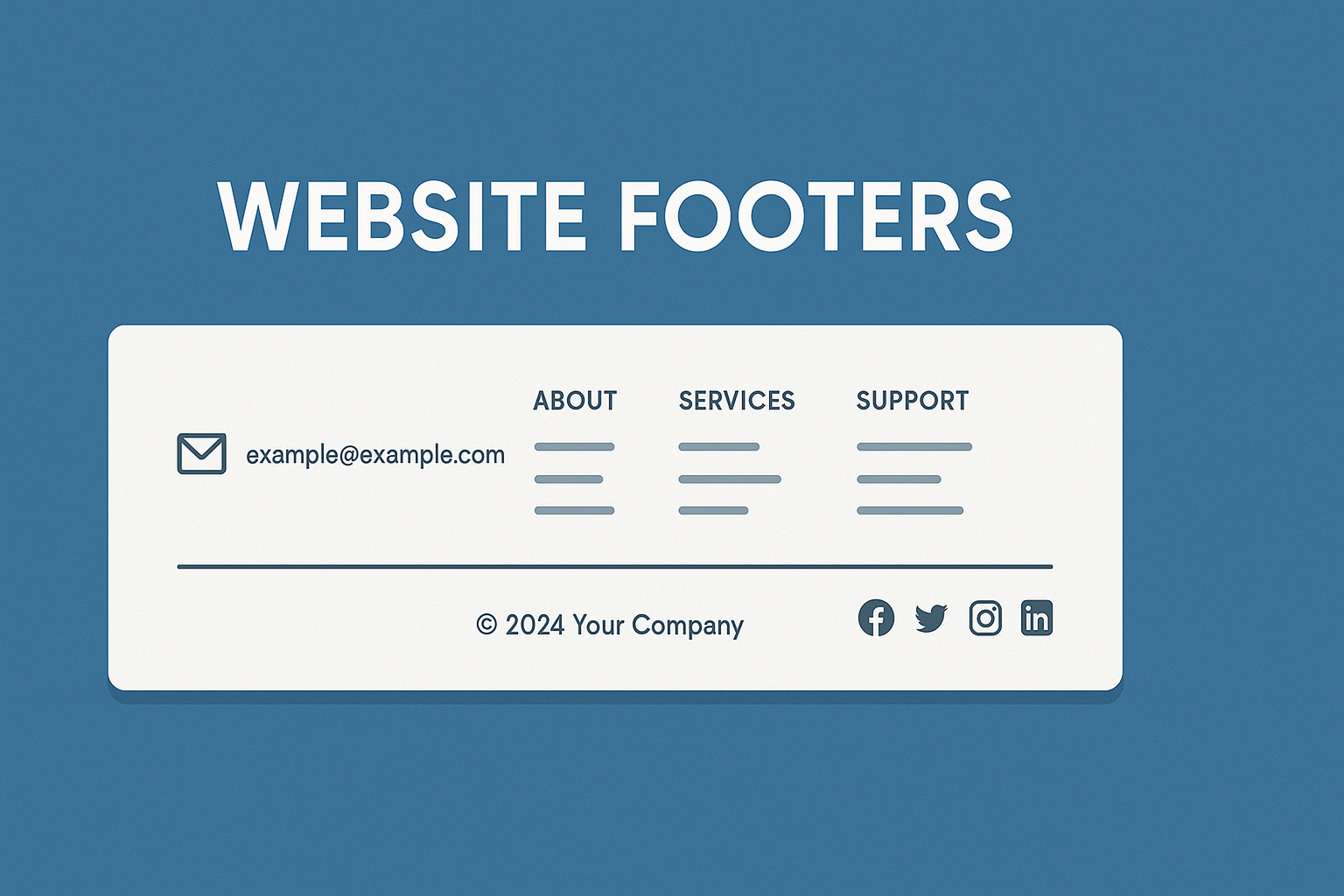Open up most modern websites and you’ll see acres of white space stretching across the screen. Minimalism has been the design trend du jour for years now, but somewhere along the way, designers confused ‘clean’ with ’empty’ and ‘breathing room’ with ‘wasteland’.
I can barely find anything on this site. Where’s the content?
White space is powerful. But too much of it—or worse, using it incorrectly—can make your website look unfinished, confusing, and frankly, a bit amateur.
White space (or negative space, if you want to sound fancy) is the unmarked distance between elements on your page. It’s not about being white—it can be any colour. The problem is that most websites are either drowning in it or suffocating without it, and both extremes are killing user experience. In 2025, it’s time to understand that strategic spacing isn’t about following a trend—it’s about guiding attention, creating hierarchy, and making your content actually readable.
🎨 1. THE TWO WHITE SPACE SINS
Let’s get specific about where this goes wrong:
Sin #1: The Barren Wasteland
You know these sites. Three lines of text floating in an ocean of nothingness. You scroll and scroll, finding barely anything. The designer clearly thought ‘minimalism’ meant ‘remove everything useful’. Your homepage hero section doesn’t need 400 pixels of padding above and below a single headline. That’s not breathing room—that’s just wasted screen real estate that could be showing value.
Sin #2: The Claustrophobic Nightmare
The opposite extreme. Every pixel is occupied. Text touches images, buttons sit on top of paragraphs, and your eye doesn’t know where to look first because everything is screaming for attention simultaneously. Zero margin between sections. Line height set to 1.0. It’s visual chaos masquerading as ‘information density’.
Both approaches fail because they treat white space as an afterthought rather than a deliberate design tool.
🔍 2. WHAT WHITE SPACE ACTUALLY DOES
When used correctly, white space serves specific functions:
- Creates visual hierarchy – More space around an element makes it more important. That’s why headings have extra margin.
- Improves readability – Line height, paragraph spacing, and margin around text blocks literally make words easier to read.
- Guides the eye – Strategic spacing creates a visual path through your content, leading users where you want them to go.
- Groups related elements – Items close together are perceived as related. Space separates different concepts.
- Provides mental rest – Dense content is exhausting. Proper spacing gives the brain processing time.
- Signals quality – Generous (but not excessive) spacing suggests premium positioning and attention to detail.
Notice how none of these functions are ‘looking trendy’ or ‘seeming modern’. White space is functional, not decorative.
⚖️ 3. FINDING THE BALANCE
Here’s how to get your white space actually working:
- Start with content priority – What matters most on the page? Give it more space. Secondary content gets less. This creates natural hierarchy without relying solely on size.
- Use the 1.5-1.6 line height rule – For body text, this range is optimal for readability. Anything less feels cramped. Anything more starts feeling disconnected.
- Apply the proximity principle – Related items should be closer together than unrelated items. Your paragraph shouldn’t be as far from its heading as it is from the next section.
- Test at actual screen sizes – That generous padding might look perfect on your 27-inch monitor but becomes absurd on mobile where it forces unnecessary scrolling.
- Consider content type – Long-form articles need more line height and paragraph spacing than product listings. Dashboard interfaces need tighter spacing than marketing pages.
- Check your margins are consistent – Random spacing values create visual dissonance. Establish a spacing scale (like 8, 16, 24, 32, 48 pixels) and stick to it.
💻 4. MOBILE CHANGES EVERYTHING
Here’s where most white space strategies fall apart: they’re designed for desktop and then sort of… hoped to work on mobile.
On mobile screens, white space is both more critical and more expensive. You have limited vertical real estate, so every pixel of padding has a real cost. But cramming everything together creates an unusable mess where buttons are too close to tap and text is impossible to read.
The solution isn’t to just reduce all spacing proportionally. You need to be strategic:
- Reduce vertical padding between sections, but maintain internal spacing within components
- Keep generous tap target sizes (minimum 44×44 pixels) with adequate spacing between interactive elements
- Maintain line height for readability, but tighten paragraph spacing
- Use collapsible sections to hide secondary content rather than cramming it all in view
If users are pinch-zooming on mobile, you’ve either made the text too small or the spacing too tight. Fix it.
🚨 5. THE RED FLAGS
Signs your white space is wrong:
For too much space:
- Users complain they can’t find information
- Your pages require excessive scrolling with little content revealed
- Important calls-to-action are below the fold with nothing compelling above them
- The site feels ’empty’ or ‘unfinished’
For too little space:
- Text is hard to read or scan
- Users accidentally click wrong buttons on mobile
- Everything feels equally important (which means nothing is)
- The page feels overwhelming or ‘busy’
- You’re getting accessibility complaints about readability
Run this test: show your website to someone who’s never seen it. Ask them to complete a simple task. If they struggle to figure out where to look or what to do next, your spacing hierarchy is wrong.
Conclusion – Final Thoughts
White space isn’t about aesthetic preference or design trends. It’s about communication clarity. Every spacing decision should serve a purpose: directing attention, improving readability, or organising information. Neither minimalism nor density is inherently correct—context determines the right approach.
Look at your website right now. Really look at the spacing. Is it deliberate, or did it just happen? Because in 2025, users can tell the difference.



